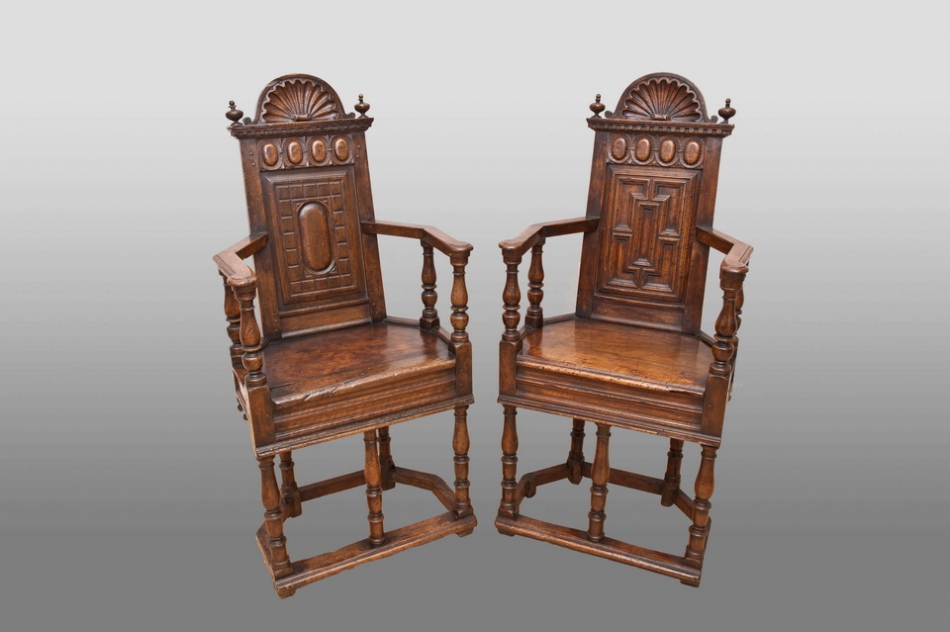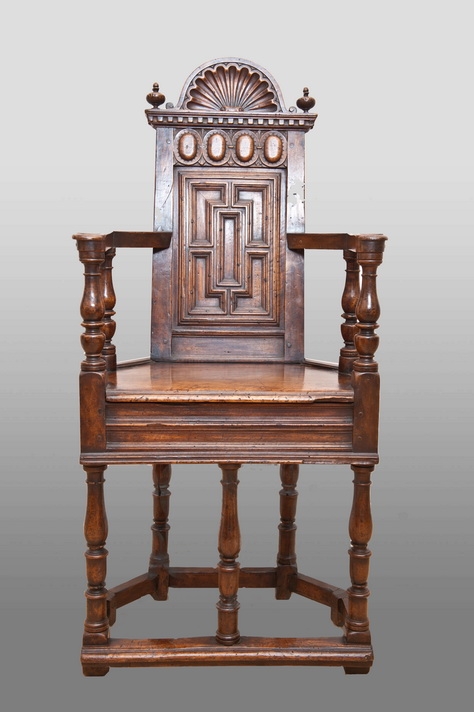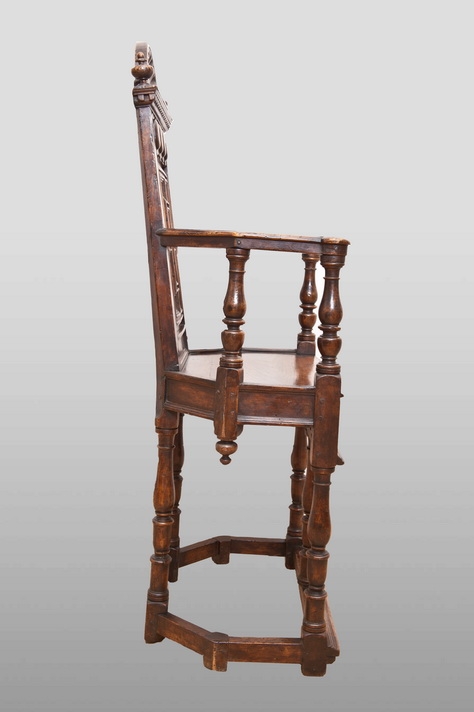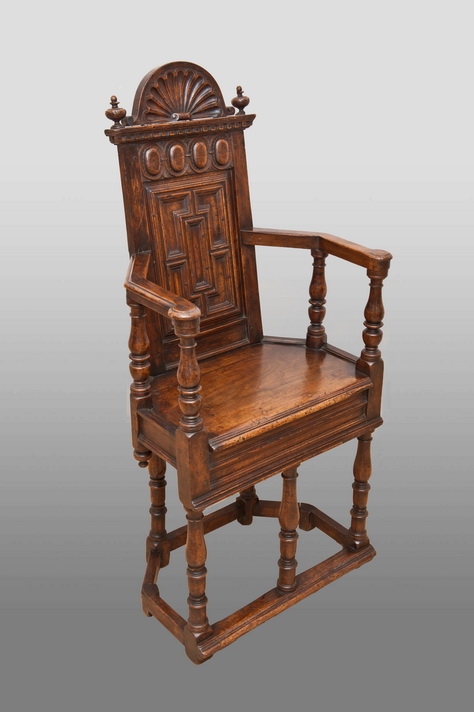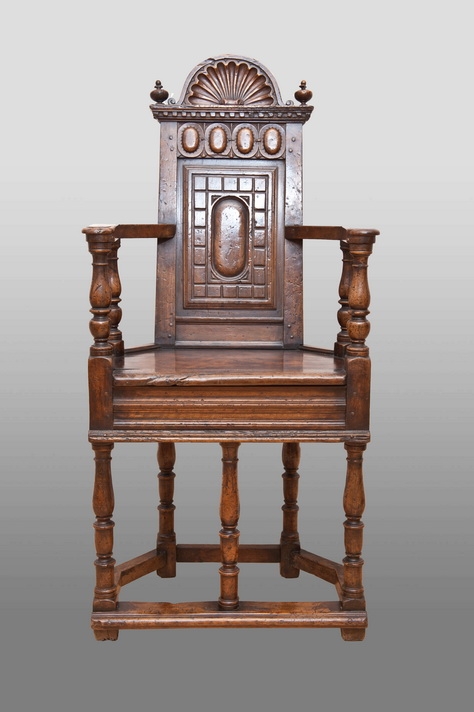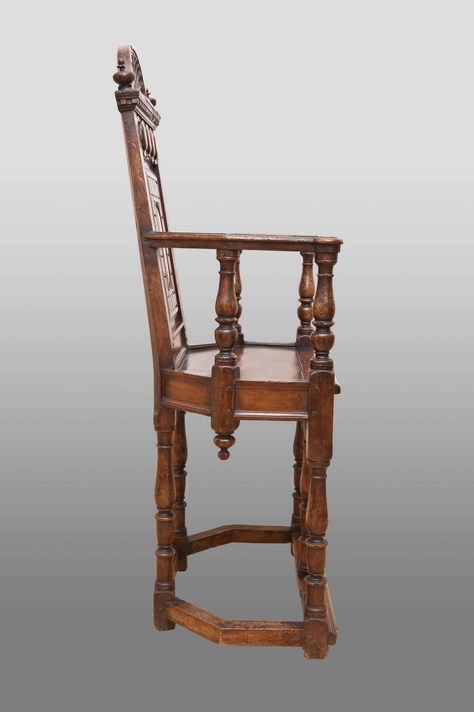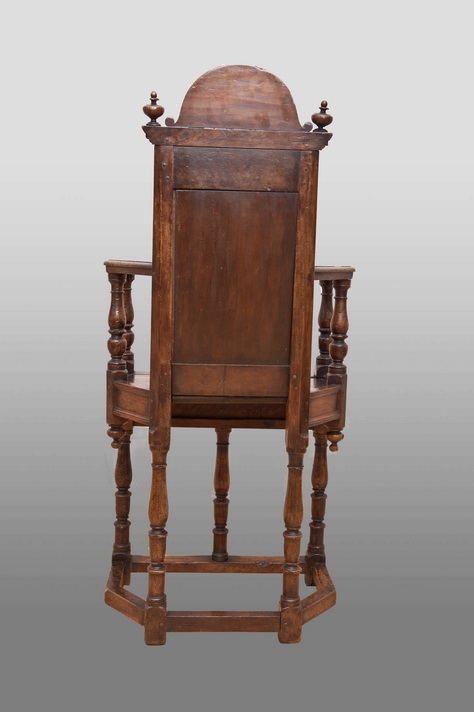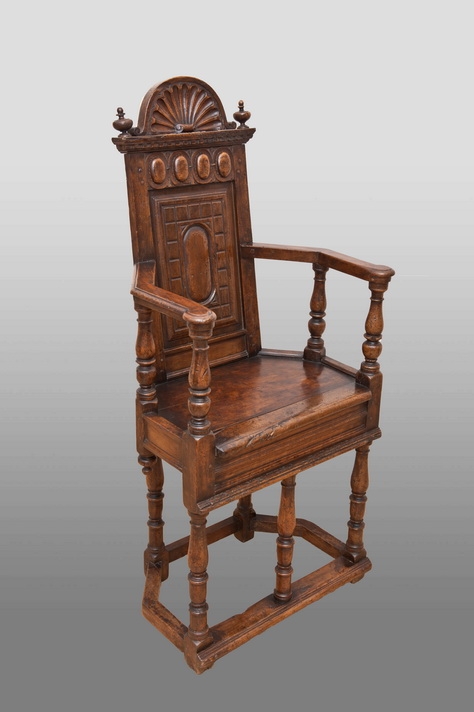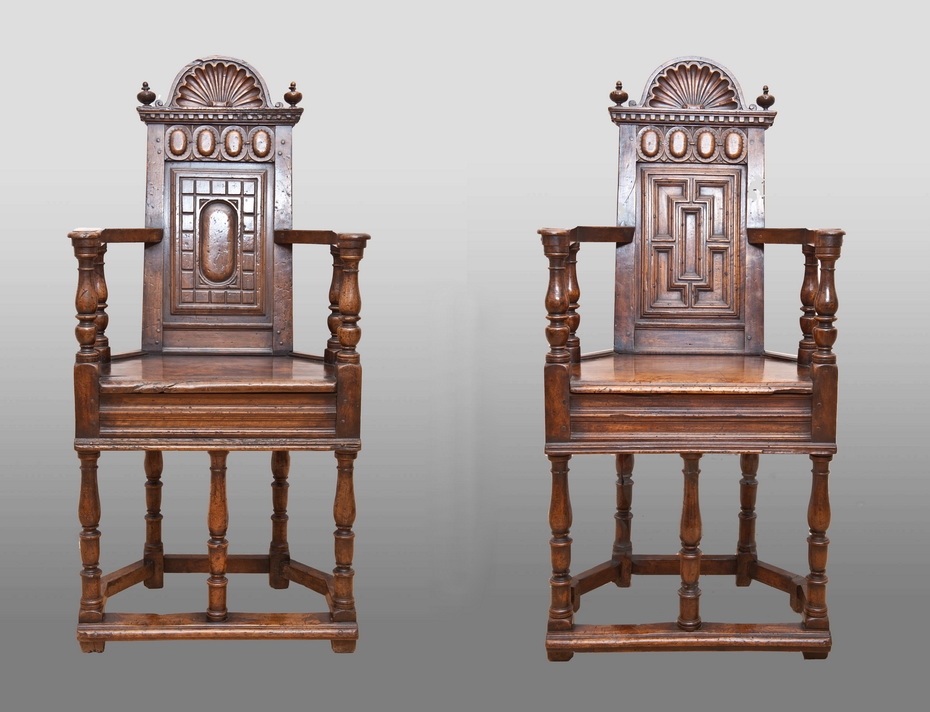Pair of French Renaissance walnut caquetoire chairs
Circa 1570
Valley du Rhone, France
W 23 × H 50 × D 17
Stock # Marh313
SOLD
Pair of French renaissance walnut caquetoires
Second half, 16th century
This type of armchair with its trapezoidal seat is known as a ‘caquetoire’. The term appeared around 1557 and was used to describe a chair with armrests which was used to sit close by the fire to gossip or chatter (caqueter). These chairs are rare examples of a ‘Tallemouze’ armchair with a narrow rectangular high back and the shape of the seat is compared with the triangular form of the talmouse cake and was narrow at the back and wide at the front to accommodate a large skirt. This sort of chair is always unique and never built in exact pairs or in a series, as any stately chair. Amongst the earliest inventories mentioning caquetoires is one in 1557 listing, ‘Une petite chaise basse caquetoire’, and in 1589 as ‘Deux petites chaises caquetoires . . .’. The Statuts et odonnances des maistres jurez huchers menuisiers de Paris of 1580 refer to them as ‘chaire basse appelle caquetouere’. Chairs of this type usually have one or two vertical supports under each arm, a carved back with a central panel and cresting and quadrangle stretchers joining the legs, with a molding applied to the front stretcher and extending over the front legs.
Condition: Minor overall wear, nicks, scratches, and cracks commensurate with its age. In a highly original state. On one of the chairs, the main portion of the seat may be an old replacement. Joints are strong and chairs are sturdy and good for use.
Comparative examples: A related chair is in the Musee Jacquemart-Andre, Paris. There are also two examples in the Louvre in Paris.
Comparative Literature
Collection Bruno Perrier, Haute Epoque, Ader Tajan, Hotel Douot, Paris, 7th December 1993, page 114 for another identical chair from the same workshop. (lacking cresting)
Daniel Alcouffe, Furniture Collections in the Louvre, Vol. I, Middle Ages, renaissance, pp. 28-29, no’s 7 and 8.
Jacqueline Boccador, Le Mobilier Francais du Moyen Age a la Renaissance, 1988, pp. 300, 302, and 303. David Dubon and Theordore Dell, furniture in the Frick Collections, Vol. V, Vermount, 1992, pp. 158, 167, and 169.
Provenance: In the Dr. Preston Pope Satterwhite collection in the 1940’s when Dr. Satterwhite in the 1940’s loaned them to the Speed Art museum in Louisville, Kentucky. The chairs were de-acquisitioned from the museum in 2011 to benefit its acquisition fund.
Partnering with Mitchell Samuels of New York’s French & Company who acted as consultant and art advisor, Dr. Satterwhite accrued a massive collection of decorative and fine arts from the 14th through the 18th centuries. Dr. Satterwhite’s donations and bequest provided the Speed Art Museum with its first pre-1800 collection of decorative arts and objects. Dr. Satterwhite’s generosity and vision spawned a collection and museum of great distinction.
